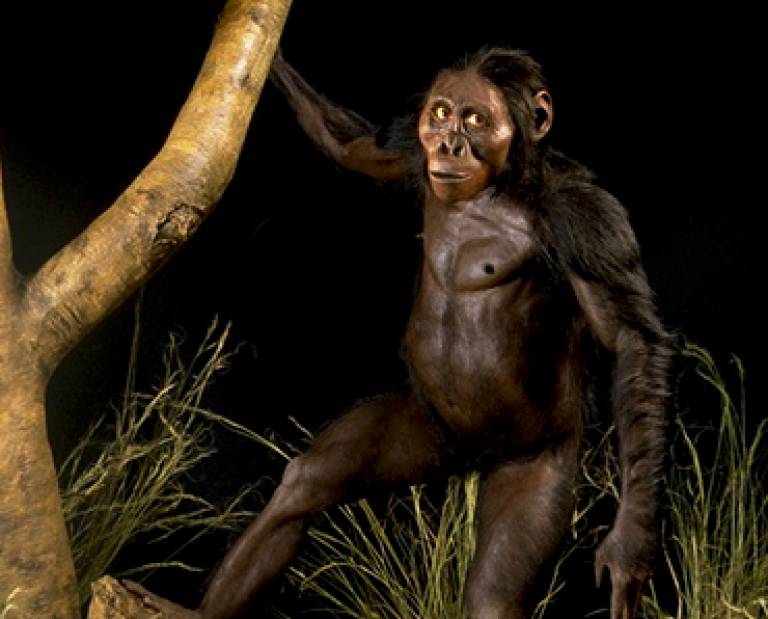The dietary flexibility of Australopithecus afarensis was unusual for the Mid-Pliocene
29 September 2016
One approach to understanding the context of changes in hominin paleodiets is to examine the paleodiets and paleohabitats of contemporaneous mammalian taxa.
 Recent carbon isotopic studies suggest that the middle Pliocene was marked by a major shift in hominin diets, characterized by a significant increase in C4 foods in Australopithecus-grade species, including Australopithecus afarensis. To contextualize previous isotopic studies of A. afarensis, a team of scientists employed stable isotopes to examine paleodiets of the mammalian fauna contemporaneous with A. afarensis at Hadar, Ethiopia. They used these data to inform our understanding of paleoenvironmental change through the deposition of the Hadar Formation. While the majority of the taxa in the Hadar fauna were C4grazers, most show little change in the intensity of C4 food consumption over the 0.5 million-year interval sampled. Two taxa (equids and bovins) do show increases in C4 consumption through the Hadar Formation and into the younger, overlying Busidima Formation. Changes in the distributions of C4-feeders, C3-feeders and mixed-C3/C4-feeders in the sampled intervals are consistent with evidence of dietary reconstructions based on ecomorphology, and with habitats reconstructed using community structure analyses. Meanwhile, A. afarensis is one of many mammalian taxa whose C4 consumption does not show directional change over the intervals sampled. In combination with a wide range of carbon and oxygen isotopic composition for A. afarensis as compared to the other large mammal taxa, these results suggest that the C3/C4 dietary flexibility of A. afarensis was relatively unusual among most of its mammalian cohort.
Recent carbon isotopic studies suggest that the middle Pliocene was marked by a major shift in hominin diets, characterized by a significant increase in C4 foods in Australopithecus-grade species, including Australopithecus afarensis. To contextualize previous isotopic studies of A. afarensis, a team of scientists employed stable isotopes to examine paleodiets of the mammalian fauna contemporaneous with A. afarensis at Hadar, Ethiopia. They used these data to inform our understanding of paleoenvironmental change through the deposition of the Hadar Formation. While the majority of the taxa in the Hadar fauna were C4grazers, most show little change in the intensity of C4 food consumption over the 0.5 million-year interval sampled. Two taxa (equids and bovins) do show increases in C4 consumption through the Hadar Formation and into the younger, overlying Busidima Formation. Changes in the distributions of C4-feeders, C3-feeders and mixed-C3/C4-feeders in the sampled intervals are consistent with evidence of dietary reconstructions based on ecomorphology, and with habitats reconstructed using community structure analyses. Meanwhile, A. afarensis is one of many mammalian taxa whose C4 consumption does not show directional change over the intervals sampled. In combination with a wide range of carbon and oxygen isotopic composition for A. afarensis as compared to the other large mammal taxa, these results suggest that the C3/C4 dietary flexibility of A. afarensis was relatively unusual among most of its mammalian cohort.
Dietary flexibility of Australopithecus afarensis in the face of paleoecological change during the middle Pliocene: Faunal evidence from Hadar, Ethiopia
Jonathan G. Wynn, Kaye E. Reed, Matt Sponheimer, William H. Kimbel, Zeresenay Alemseged, Zelalem K. Bedaso, Christopher J. Campisano
DOI: 10.1016/j.jhevol.2016.08.002
 Close
Close

